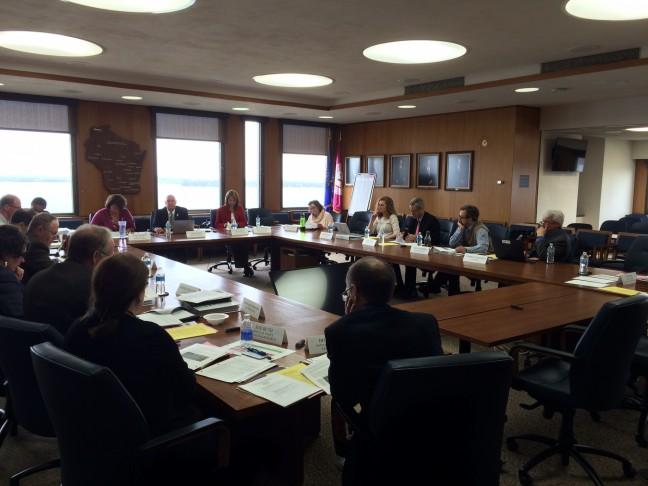With Gov. Scott Walker’s tuition freeze coming to an end in 2017, a new task force has been implemented to discuss how tuition prices will be set for University of Wisconsin System schools in the future.
The UW System Tuition Setting Task Force decided at a meeting in Van Hise Tuesday UW schools should have more control over how expensive their tuitions are.
Right now, tuition prices are set by the Board of Regents. Tuition for the UW System has been frozen for the past four years because of budgets passed by Walker, but Regent Tim Higgins, said there’s no guarantee that freeze will continue past 2017.
At the meeting, members of the task force decided each campus should have the ability to present tuition change requests individually, allowing each university to have different tuitions.
Higgins said it’s important to discuss reasons for increases or decreases in tuition so the reasoning behind setting tuition at a certain price actually makes sense.
“For years we were given a 5.5 percent tuition cap and we just did 5.5 percent tuition increases and it wasn’t rationalized, we just did it,” Higgins said. “That’s not fair. We need to be able to explain why we’re doing it and that’s what we’re trying to get to now.”
Freda Harris, UW System Office of Budget and Planning spokesperson, said it’s important to make sure universities have the ability to decrease tuitions. She said many institutions may choose to decrease tuition to increase attendance rates.
Tim Norris, from the UW-Madison Budget Office, said if tuition is increased at a school, another possibility would be to use that extra money to offer more financial aid, like many private institutions do. That way, tuition would be higher, but very few students would actually pay the full cost of tuition.
The task force plans to implement changes in three stages, Higgins said. The first is to come up with a model for setting tuitions. The second is to get feedback on that model from legislators, Walker, students, parents and faculty and incorporate their input into a final draft of the model.
While coming up with a model, the task force will look at tuition as it connects to four different areas: affordability for students, the market, costs to the universities and state needs.
Higgins said making tuition affordable is the most important of these areas.
“Affordability is by far the key of all these things,” Higgins said.
Bob Jokisch, Office for Academic and Student Affairs’ spokesperson, said the number of students with student debt and the amount of debt at graduation are both increasing.
Donna Dahlvang, UW-Superior spokesperson, said it’s important to make sure tuition does not rise to the cost of outpacing student loans. She said if loans aren’t even enough to pay for tuition, students won’t be able to attend college.
The task force’s goal is to finish its model by the end of the summer and present it to the Board of Regents in the fall. Its next meeting is May 20.


